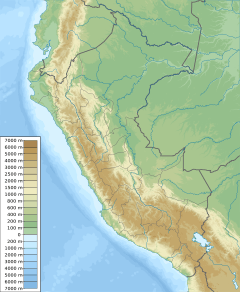Callimedusa baltea facts for kids
Quick facts for kids Callimedusa baltea |
|
|---|---|
| Conservation status | |
| Scientific classification | |
| Callimedusa baltea is only known from the Serrania de Sira in east-central Peru | |
| Synonyms | |
|
The Callimedusa baltea is a special kind of frog. It belongs to a group of frogs called Phyllomedusinae. This frog is found only in one specific place: the western side of the Serrania de Sira mountains in Department of Huánuco, Peru. People sometimes call it the purple-sided leaf frog. Its scientific name, baltea, comes from a Latin word meaning "border." This refers to the salmon-colored line that separates the different colors on its body.
What Does the Purple-Sided Leaf Frog Look Like?
Scientists have studied a few of these frogs to learn about them. They looked at an adult female, an adult male, and a young frog. The adult female was about 64 mm (2.5 in) long from its snout (nose) to its vent (bottom). The adult male was a bit smaller, about 45 mm (1.8 in) long.
The frog's head is about as wide as its body. Its snout is flat at the end. It has a rounded parotoid gland, which is a special gland often found behind the eye. The tympanum, which is like its eardrum, is partly hidden by a fold of skin above it.
Its fingers have large, round pads called discs, but they are not connected by skin (no webbing). Its toes also have discs, but they are a bit smaller than the finger discs, and they also don't have webbing. The frog's back, or dorsum, is a bright lime green. Its belly, or ventrum, is purple with some white spots. The sides of its body, called the flanks, are purple. A continuous salmon-colored stripe runs along its sides, creating a clear line between the purple and the green colors. The frog's iris, which is the colored part of its eye, is greenish-gray.
Where Does the Purple-Sided Leaf Frog Live and How Is It Protected?
The Callimedusa baltea lives in low cloud forests. These are forests high up in the mountains, usually between 1,280–1,500 m (4,200–4,920 ft) above sea level. Adult frogs have been found at night sitting on plants near ponds. The baby frogs, called tadpoles, grow up in temporary ponds. These are ponds that only have water for part of the year.
This frog is not very common. Even though scientists looked for it in 2013 and 2014, they only found about one frog per hour of searching. The Callimedusa baltea is known from only two specific places. Outside of these areas, its home is in danger because of habitat loss. This means that the places where it lives are being destroyed or changed by human activities. Luckily, this frog is protected because it lives inside the El Sira Communal Reserve. This reserve helps keep its habitat safe.
See also
 In Spanish: Phyllomedusa baltea para niños
In Spanish: Phyllomedusa baltea para niños



